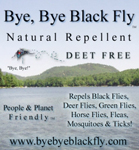
Some squirrels can become pretty tame, but it depends on their personality. Some are very appreciative of the opportunity and will treat your hand with care, but others are irritated, and sometimes bite. The tufts on the ears are prominent during the winter.
Red Squirrel
Anyone with a bird feeder out is pretty familiar with Red squirrels. This time of year, when their natural foods like spruce and pine cones, are getting in short supply, they tend to heavily rely on the generosity of us birdwatchers for their groceries. They are not always welcome, but Red squirrels Tamiasciurus hudsonicus, are an interesting lot.
Here in the Quoddy region (and all of Maine and New Hampshire) we have the subspecies gymnicus, which is a little smaller and darker than the rest of the 21 subspecies of Red squirrels. Red squirrels range from Labrador to Georgia and in a broad swath to Alaska and down the Rockies to Arizona.
A Red squirrel is very territorial and the only time they get along is when they are very young or when they have romance on their tiny mind. A female Red squirrel may breed twice a year, but often only once, depending on various conditions. The female is in heat for only one day during the breeding season, which, under good conditions, is typically in March. After a gestation period of about 35 days the young are born in a nest typically made of shredded cedar bark in a hollow tree, birdhouse or my barn. After about 5 weeks the youngsters look like small adults with skinny tails and cautiously venture from the nest to play and wrestle with each other. This period of play changes after a couple of weeks when the young squirrels develop territorial habits, and any other squirrel within about two feet is first warned, then attacked.
A Red squirrel may chase off the larger Gray squirrel if the later comes into the Red squirrel’s territory, but usually the Gray squirrel prefers deciduous trees while the Red Squirrel prefers conifers. This time of year they both prefer Black oil sunflower seeds, and the Gray squirrel sneaks in to avoid the feisty Red squirrel.
The diet of Red squirrels is pretty interesting, as they seem to eat almost anything. During the maple sugar season the Red squirrel will nip off twigs of maple and birch trees to drink the sap. They will even remember which twigs they cut and come back a day later to lick the dried, concentrated sap. One of our no-nos, the mushroom, Amanita mascara, is apparently eaten by Red squirrels with no adverse results, except to the mushroom. A few years ago a study in Canada’s Yukon Territory about snowshoe hares indicated that new born hares (leverets) had only a 33% chance of surviving their first 2 weeks. What was surprising was that over half of the deaths of the leverets were attributed to Red squirrels. Song bird nestlings and birds eggs are also eaten by Red squirrels.
Perhaps the biggest tragedy about the predaceous Red squirrel was caused by people. In the early 1960’s the Red squirrel was introduced to Newfoundland with the intent of augmenting the food supply for the Pine Marten, which was trapped for its valuable fur. The Red squirrel flourished in its new environment, but at the expense of the Newfoundland Crossbill Loxia curvirosta percna. The crossbill, which had been relatively common up to this time, has since taken a disastrous drop in its numbers, apparently due to the competition for spruce cones from the introduced red squirrel. In addition there seems to be more Pine Martens, which not only prey on the abundant Red squirrel but also snack on the crossbills. Is the Newfoundland crossbill headed for extinction?
I don’t have a big problem with Red squirrels. I would rather see more bobcats and owls, but I do prefer squirrels over nothing.




